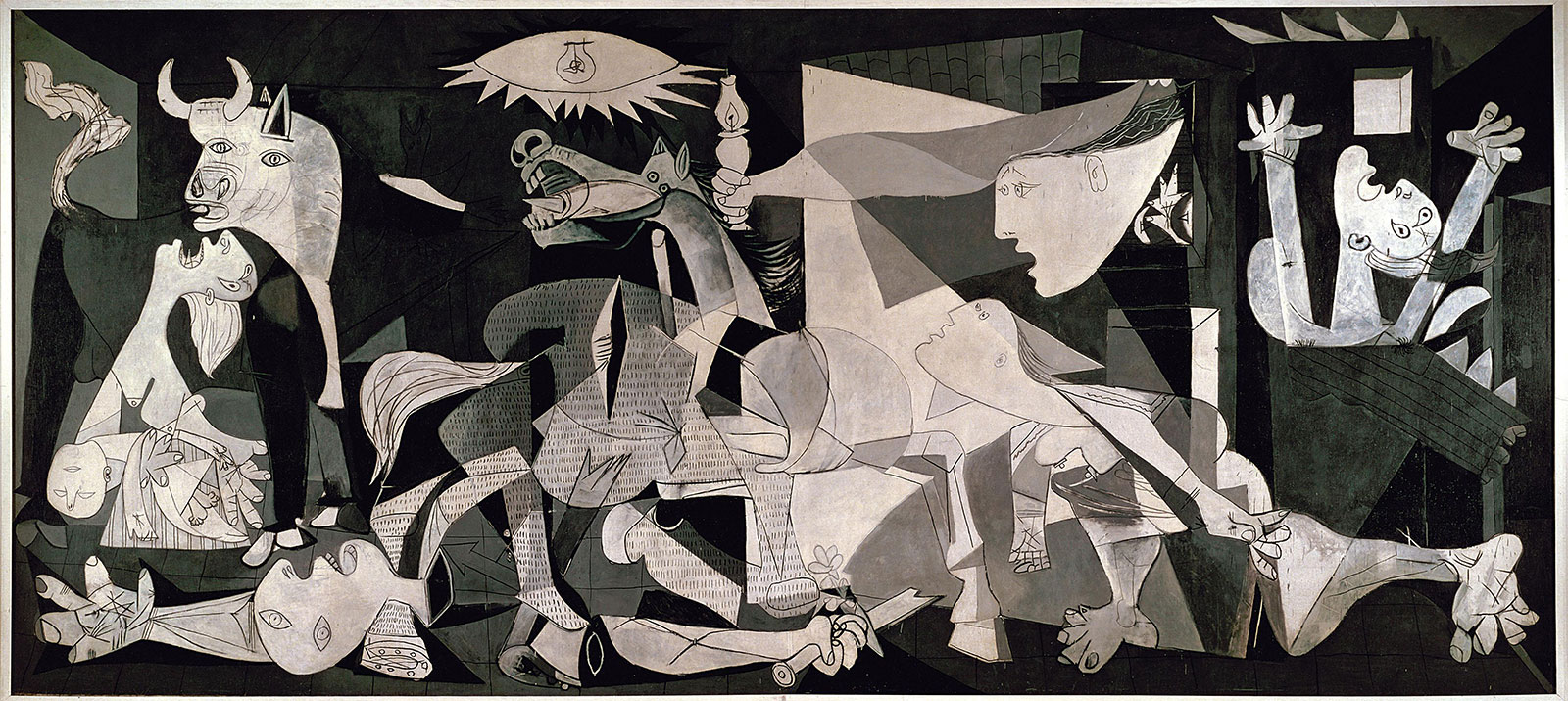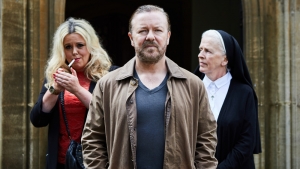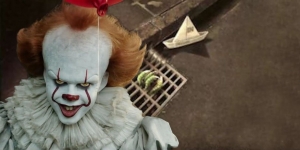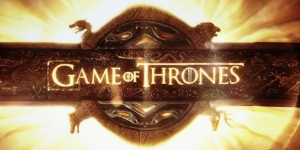
Shakespeare’s Tempest and Capitalism: The Storm of History
Tony McKenna reviews Shakespeare’s Tempest and Capitalism: The Storm of History, by Helen C. Scott, which is a fruitful and dialectical analysis revealing organically the aesthetic character of the play in the context of history
As well as being significant in terms of Shakespeare’ s own aesthetic output, The Tempest provides a vivid window into the tumultuous historical currents and contradictions of the epoch in which the great playwright lived, syphoning them into its ethereal and haunting poetry. Helen C. Scott’s excellent and timely study of the play is a book of two parts. Firstly, she endeavours to raise those historical contradictions to the light. To delineate in clear but profound terms how processes of primitive accumulation were working away, undermining and eroding the certainties of the old feudal world as the epoch of mercantile capitalism and global empire began to take shape – before revealing how these processes leave their mark on the play. Secondly, she provides a meticulous investigation of what has happened to the play since; i.e., the way in which it came to be a contested terrain – the site across which the ideological struggles of successive epochs were fought out in and through polarised interpretations of the work, both revolutionary and reactionary.
To fulfil the first of these tasks, to elaborate the historical necessity which is crystallised in the play, Scott quite naturally begins with an examination of the epoch more broadly:
The Tudor and Stuart state balanced between the old feudal lords and the rising capitalists; it had its basis in those rulers committed to maintaining the old order, but it also enabled the development of capitalism through state-sponsored enclosures of land, which offered some yeoman farmers and landlords the opportunity to develop agricultural capitalism. The state also facilitated the colonial expansion that enabled the rise of the new merchant capitalists… These developments were made possible by the ‘primitive accumulation’ of capital – labourers were separated from the land and the products of their own work and compelled to enter the wage labour market… As a corollary, the new triangular trade literally enslaved entire populations, denying them possession of even their own labour power… The naked contradiction between the ideology of bourgeois individualism and the fact of slavery was justified by the development of a systematic racism, which denied the enslaved human status.
In her clear-eyed analysis the contradictions abound: the dichotomies between the old feudal order and the new capitalist epoch which is grafted onto the state, between ‘free’ labour and slavery, countryside and the town, domestic exploitation and colonial expansion, the rise of the merchant and upward mobility pressing tightly against the old ossified forms of title and aristocracy. Scott depicts a world in flux, a world quite literally subject to a historical tempest, whereby uprooted populations flow from the land to the city, whereby peoples from the most disparate of places across the globe are sucked into the maelstrom of the emerging capitalist order as paupers, proto-proletarians, slaves, entrepreneurs, investors, merchants and mariners. And where did this process reach its most concentrated expression? In the city of London, answers Scott, for
London was the urban heart of England’s early capitalism and boasted conditions that stood in sharp contrast to the circumscribed environment of the previous era… The population of London is reckoned to have increased eightfold from the beginning of the sixteenth to the middle of the seventeenth century … Stephen Greenblatt describes it as a “city of newcomers” which was home to an “unprecedented concentration of bodies”
Such a complex and contradictory demographic formed the rich soil from which Renaissance theatre bloomed, where the first public amphitheatre of modern times was set up in 1576, swiftly followed by dozens of others. These theatres marked a qualitative leap forward; in late medieval times troupes of travelling actors were starting to be replaced by actors repeatedly performing in the same site, usually an inn. But the amphitheatres provided ‘a purpose-built permanent venue for open-air performance’, a place where the diversity and richness of the London population could increasingly be concentrated into the single space; seamen, ironmongers, prostitutes, dock-workers standing on the ground level (yard) while the upper classes could be found in the more expensive gallery seats.
Likewise, the social background of the playwrights, actors and owners themselves was
richly illustrative of shifting class dynamics. John Brayne, the figure behind the Red Lion, was a successful London Grocer; James Burbage, leading player in the Queen’s Men, was a carpenter. Of the six shareholders of the Lord Chamberlain’s Men, William Kempe had been a jester with the Earl of Leicester, and Thomas Pope was also part of the Earl’s retinue; John Hemmings was a wealthy London Grocer.
The theatre at this time was categorized by this mix of contradictory elements; the links to royal and aristocratic patronage were sustained but in the same moment theatres were established as ‘commercial joint stock companies with the central goal of making a profit’.
In other words, the theatre itself had come to ‘register the upheavals, contradictions, conflicts, and immense energy associated with the broader period’. It was itself a social phenomenon which was caught between the old and the new, imbued with the contradictions and paradoxes of the conflict between one epoch and the next, and The Tempest, perhaps more than any other play, bears the weight of those historical contradictions. Indeed, as Scott eloquently reveals, such contradictions provide the fundamental tension and driving force of the play: there is, for example the fundamental opposition which opens up between Prospero and Caliban, whereby Caliban comes to signify the colonised ‘other’, a figure who is degraded, debased, deformed – partly as a result of the drudgery of the never-ending labour to which he is subjected in and through the dark magic of the coloniser of the island.
And yet, Caliban’s representation is contradictory, because
it is not restricted to abject other, but also allows for sympathy and agency, elicited through his exceptionally powerful and figuratively rich language, which has led generations of anti-colonial artists and writers to champion the character … His first beautiful soliloquy asserts his right to the land – on the grounds of his material inheritance – and presents a moving account of his generous treatment of Prospero that resonates with the historical conquest of Native Americans’. In the looming presence of Sycorax (as described by some of the other characters) we have a mysterious female figure in possession of dangerous and destructive powers. For this, she is excoriated and demonized as a witch by the very people who have displaced her, and so, while on one level she is a malevolent and oppressive figure with sinister powers, on another she is ‘an Algerian woman who is scorned, demonized, and exiled … [someone ]… come to have considerable symbolic significance as a figure at the nexus of colonial, female and proletarian dispossession’.
Likewise the character of Prospero is also fraught with contradiction. On the one hand, he is in possession of incredible magical powers. As Scott points out, at this point in time, such ‘magic’ can ‘represent technology and science or philosophy’ too, for this was the epoch of the Renaissance scientist, figures such as Francis Bacon who himself was sundered between epochs, on the one hand developing a more systematic and rational bourgeois science while at the same time still wedded to some level of supernatural mysticism in and through the study of alchemy. But behind the cultivation of bourgeois science, of course, there lies bourgeois production, and in this Prospero is very much a harbinger of the proto-capitalist, for what does his science/magic do besides set labour into motion in and through its oppression of a manual worker like Caliban? Of course, the monstrous effect of the unbridled application of bourgeois science to production described in terms of a metaphor of magic, is something another great writer would take up in the nineteenth century; consequently ‘Prospero is destined to be perennially associated with Marx’s capitalist sorcerer.’
But in the very moment that Prospero emerges as a cypher for bourgeois modernity this is undermined by the playwright in the role Shakespeare assigns to the character. For Prospero renounces his magic at the end; an ending which, ostensibly, sees Prospero reclaim his title as the Duke of Milan and successfully unite his daughter Miranda with the Crown Prince Ferdinand, thus securing Prospero’s land and political legacy in the classical feudal fashion. In this respect Prospero becomes a figure of feudal restoration. But the aesthetic power and heightened ambiguity of the play is, for Scott, the very point; the dialectical oppositions which the playwright constantly calls into being (much like the sorcerer’s apprentice) are always on the verge of melting into one another, a process Scott employs another Shakespearean concept to denote – that of ‘sea-change’.
The ambiguity of the play has proved frustrating for some; the ‘harmonious’ reconciliation of the conclusion is seemingly undercut by the sheer bitterness of Prospero’s words to his treacherous brother; can such fragile harmony sustain, or are the fissures and fault-lines which exist between the characters going to explode into life once more in another all-out war? On the one hand, then, the conclusion lends itself to a reading ‘celebrating the conservative restoration of order’ while at the same time others can argue that the ‘forced closure’ does not successfully erase ‘the enduring conflicts and systematic brutality’ which is at work underneath the surface. Such ambiguity, such duality, is far from accidental; it is in somewise built into the very fabric of the historical period itself, a period which brings the old epoch and the new into some kind of ‘dialectical constellation’ but at the same time it presents as a kind of limbo, neither one nor the other, caught ‘between things ended and things not yet begun’. In this context one can perceive the historical necessity which is at work in Shakespeare, ‘the unmoored beginnings and endings’ and the strange aroma of ambiguity and contradiction which arises from The Tempest like a hoary mist from a cold sea.
Such ambiguity, of course, helps lend to the play a variety of possible interpretations, and these Scott explores rigorously and systematically. She begins by focussing on the period of Restoration, half a century after Shakespeare’s death, when the ‘compromise of the restored monarchy provided an imprimatur for the newly ascendant bourgeoisie while curtailing further social upheaval; the radical questioning of society represented by the Diggers and Levellers was for now closed down.’ It was in such a context that the ‘royalist Davenant and the by now thoroughly counterrevolutionary John Dryden rewrote the play. Their Restoration version emphasized the failed rebellion from below in the subplot at the expense of the courtly usurpation it mirrors in Shakespeare’s play. The conservative dimensions … were emphasised but many of the discordant countervailing dynamics erased.’ But the radical parameters of The Tempest were naturally revived as we enter the age of the French Revolution. In this period ‘the play was evoked in myriad registers in a wide range of poetry and prose. The Prospero/Caliban relationship was roped into the Jacobin debates, variably representing the corrupt old regime and the democratic new, while Caliban acquired what was to be a lasting identification with the emergent proletariat.’
In addition, Scott provides a detailed analysis of the way in which the play was fused with the Romantic Movement, which established ‘The Tempest as the quintessential Shakespearean work and endowed it with those powerful qualities of heightened imagination and creativity that from this time on are indelibly associated with it.’ Of course, The Tempest with its storms and ‘sea change’ provided the perfect counterpart to romanticism and its use of pathetic fallacy in its literature and poetry; the tempest within The Tempest becomes an exceptional metaphor for both the explosive creativity of the Romantic imagination and the revolutionary explosions of the epoch. In light of this Scott provides us with a detailed examination of the works of Keats, Shelley, Coleridge, Wordsworth and Blake in an extended and intriguing discussion which shows how the romantic imagination was indelibly shaped by its fecund encounter with Shakespeare’s great play.
Scott goes on to give a detailed account of the way in which the play was interpreted and performed in light of the First World War and the rise of modernism, among other things demonstrating how ‘The Tempest is central to [T.S.] Eliot’s dystopic vision of a shattered world’ (84) in the poet’s most famous work, ‘The Wasteland’. She shows how Caliban became a dystopic symbol of the downtrodden and the starving in depression-era USA through works such as Edwin Muir’s ‘Sick Caliban’. And she provides a particularly fascinating discussion on anti-colonialism and feminism, and the way in which these movements have been syphoned through the categories and characters of the play; in the late twentieth century there was developed the ‘Sycorax School’ which sought to rehabilitate the unseen character of Sycorax by decking it out in the colours of feminism and anti-colonialism, with thinkers like Silvia Federici providing accounts placing the dispossession of colonial subjects and ‘the global subordination of women , and specifically the persecution of witches, at the very centre of capitalism’s early development, therefore emphasising the symbolic centrality of the “witch”’.
Scott also looks at the way in which elements of the play have become staples of modern culture; many of us are probably aware that the title for Aldous Huxley’s dystopic novel comes from Miranda’s speech where she waxes lyrical about the wonder of those who have arrived to the island and the ‘brave new world’ they represent. But I’d wager fewer readers are familiar with the episode in Star Trek: The Next Generation which uses The Tempest as the underlying theme of one of its episodes or the Rob Newman 2003 comedy routine (From Caliban to the Taliban) which ‘places The Tempest in the context of the long history of capitalist imperialism … in fierce satirical mode.’
The concluding chapter provides an examination of the way the play has fared during the epoch of neoliberalism, and among many high spots, Scott provides – to my mind – a quite brilliant analysis of the opening ceremony of the Olympic Games in London, showing how ‘Tempest’ themes and characters were hitched to a triumphal sense of patriotism which ‘sanitized [Britain’s] long history of colonial plunder’ in and through a corporate event that typified the glitz and glamour of wealth and sponsorship while just outside the stadium ‘the ongoing economic and social hardships felt by London’s multiracial working class’ was still very much in evidence.
Scott’s book expresses both the passionate enthusiasm for the play which comes from being a life-long fan, and the ability to provide a lucid exposition of the fundamental themes, contradictions and idiosyncrasies which comes from decades of dialogue with the students she has taught on the subject of The Tempest. The level of knowledge and research which Scott mobilizes is admirable, and it is delivered with the clarity of a teacher who seeks to delight the student with her subject matter. As well, it provides a profound example of classical Marxism. It is a fruitful and dialectical analysis – neither heavy-handed nor didactic – which reveals organically the aesthetic character of the play in the context of the history which sets the basis for it.
Helen C. Scott's Shakespeare’s Tempest and Capitalism: The Storm of History is published by Routledge, London and New York, 2019. 252pp., £120 hb
ISBN 9781409407263. This review is republished from Marx and Philosophy Review of Books.









